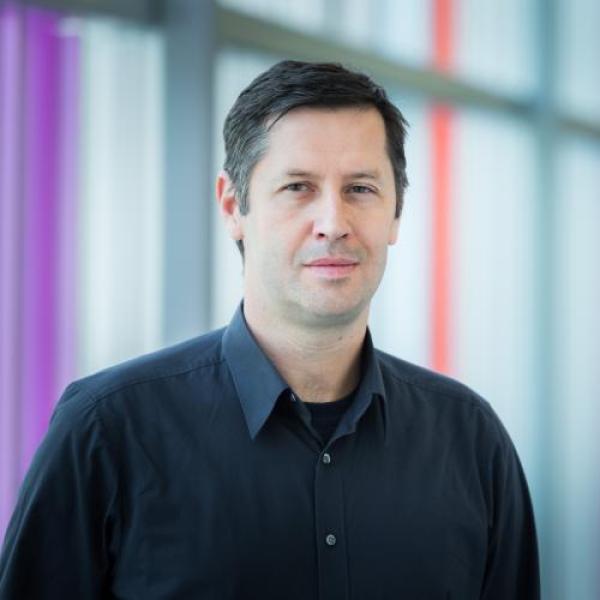Dr. Alex Rauscher
Associate Professor
Department of Pediatrics
Dr Alexander Rauscher obtained his PhD in Physics from the TU Vienna, Austria, and after post-doctoral training at the Friedrich-Schiller-University Jena, Germany, he joined the UBC MRI Research Centre at the University of British Columbia in 2007. He became Assistant Professor at the Department of Radiology at UBC in 2010. In 2012, he received a CIHR New Investigator Award. In 2015 he joined the Department of Pediatrics at UBC as a Canada Research Chair in Developmental Neuroimaging.
Current Research Focus
Dr. Rauscher’s work focuses on the development and utilization of new quantitative magnetic resonance imaging methods for brain research. The overarching goal of this work is to develop markers for tissue damage and repair in the central nervous system.
Example Project
“Quantitative Imaging Markers for Tissue Damage and Repair in Multiple Sclerosis (MS)” With a typical magnetic resonance imaging (MRI) scan, only the magnitude of the MRI signal is displayed. The MRI signal's phase is usually ignored because it requires extensive and complicated data processing before it can be used. Using a lighthouse as an analogy, the MRI signal's magnitude corresponds to the brightness of the lighthouse beam and the signal's phase corresponds to the beam's direction. Phase information comes for free with almost every MRI scan and can be used in addition to the magnitude. Moreover, phase is exquisitely sensitive to changes in tissue due to injury caused by trauma or by a range of diseases, such as MS. Standard processing of phase has already successfully demonstrated the phase’s exquisite sensitivity but translation of the phase information into quantitative susceptibility maps (QSM) allows for the measurement of tissue composition. Dr. Rauscher's team has been developing rapid algorithms for QSM and is currently working on solutions that employ machine learning for even faster image reconstruction. The researchers test these algorithms in post mortem tissue, where they can measure tissue composition with alternative methods, and in human subjects. Eventually, QSM may become a marker for tissue repair in clinical trials of new drugs for MS. Such markers are currently not available, yet urgently needed due to the rapid progress in MS drug development. With the methods developed at Dr. Rauscher's lab, trials of treatments with neuroprotective properties may become faster and cheaper.
Research Keywords
Quantitative MRI, Neuroscience, Imaging, Multiple Sclerosis, Concussion, Traumatic Brain Injury
